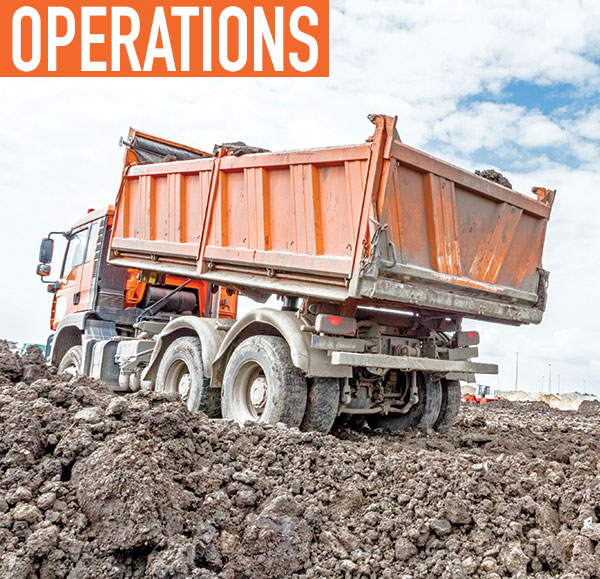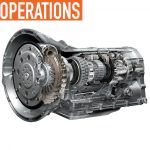On May 1, 2017, FMVSS 111 went into partial effect. FMVSS 111 aims to improve drivers’ rear-visibility fields of view.
Arguably, the most effective way to guarantee that a vehicle will back up safely is to have a spotter directing the driver and making sure the way is clear. But, having an additional person assigned to every vehicle for this one purpose alone is impractical—and spotters themselves are often the victims of backing accidents. Our search for alternative ways to make reversing safer has led us to the frontier of safety technologies to provide drivers with systems that complement common backing solutions, such as conducting a visual walk-around and the proper adjustment and use of rear and side view mirrors.
FMVSS 111
On May 1 of this year, certain vehicles with a GVWR of 10,000 lbs or less must implement a rear-visibility field of view system. According to FMVSS 111, vehicles up to this weight limit that have been altered on or after this date must have a rear-view system comprised of an exterior camera and in-vehicle monitor. Vehicles in this size range manufactured on or after May 1, 2018 must have full rear-view visibility compliance. These systems must meet specific performance requirements, and must provide drivers with a field of view that includes a 10- by 20-ft zone directly behind the vehicle.
The adoption of new technology often lags far behind the directives themselves. In 2007, Congress passed the Cameron Gulbrandsen Kids Transportation Act, which directed NHTSA to put rules in place that would expand drivers’ rear field of view. The act was named after a child who was run over by an SUV moving in reverse. He was not the first child to lose his life this way.
HIDDEN FROM VIEW
According to NHTSA, approximately 79 people are killed and 148 injured every year by vehicles in the process of reversing. Tellingly, while drivers spend almost 99 percent of their time operating a vehicle that is moving forward, 25 percent of vehicle accidents occur while backing. Because of their small stature, children five years and under comprise 96 percent of all back-up accidents—and the number of children who have died in back-up accidents has doubled since 2006, due in part to the increased size of vehicles.
With these safety initiatives taking place in the automotive sector, industry leaders foresee mandates in medium- and heavy-duty industries to be implemented in the future. The momentum created for providing safer vehicles under 10,000 lbs has drawn attention to the need for safer vehicles in general. This creates an opportunity to direct further safety efforts to heavy-duty equipment to prevent potentially serious damage.
THROUGH THE YEARS
Attempts to improve the safety of medium- and heavy-duty trucks moving in reverse have evolved over the years. Spotters were an early attempt to improve safety, and their use continues to this day when drivers have an obstructed rear view. Back-up alarms have been used for years to warn bystanders of commercial vehicles operating in reverse.
These alarms are often not effective, because the beeping can be difficult to hear amid loud background noise, and because pedestrians have become accustomed to the sound and pay less attention to it.
The combination of rear-view cameras and in-cab monitors marked a turning point in large vehicle safety, giving drivers an additional “set of eyes.” But, even cameras can have blind spots that pose significant safety risks. To enable drivers to peer even deeper into these blind spots, safety professionals entered into the high-tech world of object detection, also known as “collision warning.”
Various active collision warning systems are now available to help the driver mitigate a potentially fatal accident. Some of these technologies include RFID tagging, LiDAR 3-D mapping, and object detection radar. Each offers an alert to the driver that there is something in a blind spot and they should check their monitor and mirrors.
BACKWARD MOVEMENT
Amid all of this increasingly sophisticated technology, FMVSS 111 offers a much-needed standard—but only a relatively modest one. Systems that integrate different technologies, including cameras, are themselves driving the development of semi-autonomous and fully autonomous vehicles. As we see in on-road and off-road industries (as in the development of driverless passenger cars), the time may soon be at hand when the root cause of vehicle accidents—we humans ourselves—will be removed altogether from the complex act of driving.
In a sense, the very act of moving backward is unnatural. Most animals on earth are capable of it, and the smaller the creature, the easier it is. But, watch any creature—whether a dog, cat, whale, or human—go backward and it’s clear that few, if any, are designed to do so. As the old saying goes, you need to have “eyes in the back of your head” to move backward with any semblance of ease.
Emerging technologies may soon give us that capacity. But, between higher speed limits, more crowded roadways, and the all-too-human problem of distracted driving (and walking), the ability to safely navigate all vehicles may well rely on safety technology to provide the means to do so confidently.
ABOUT THE AUTHOR:
Greg Spiropulos is a national account manager for Preco Electronics, where he provides collision avoidance safety products to the medium- and heavy-duty equipment markets. His duties are to develop partnerships with OEs and upfitters, dealer entities, utility companies, municipalities, waste management companies, and OTR trucking. He is committed to making these industries aware of technologies that are available to increase safety for all medium- and heavy-duty segments.
_______________________________________________________________________
MODERN WORKTRUCK SOLUTIONS: MAY 2017 ISSUE
Did you enjoy this article?
Subscribe to the FREE Digital Edition of Modern WorkTruck Solutions magazine.
![]()




